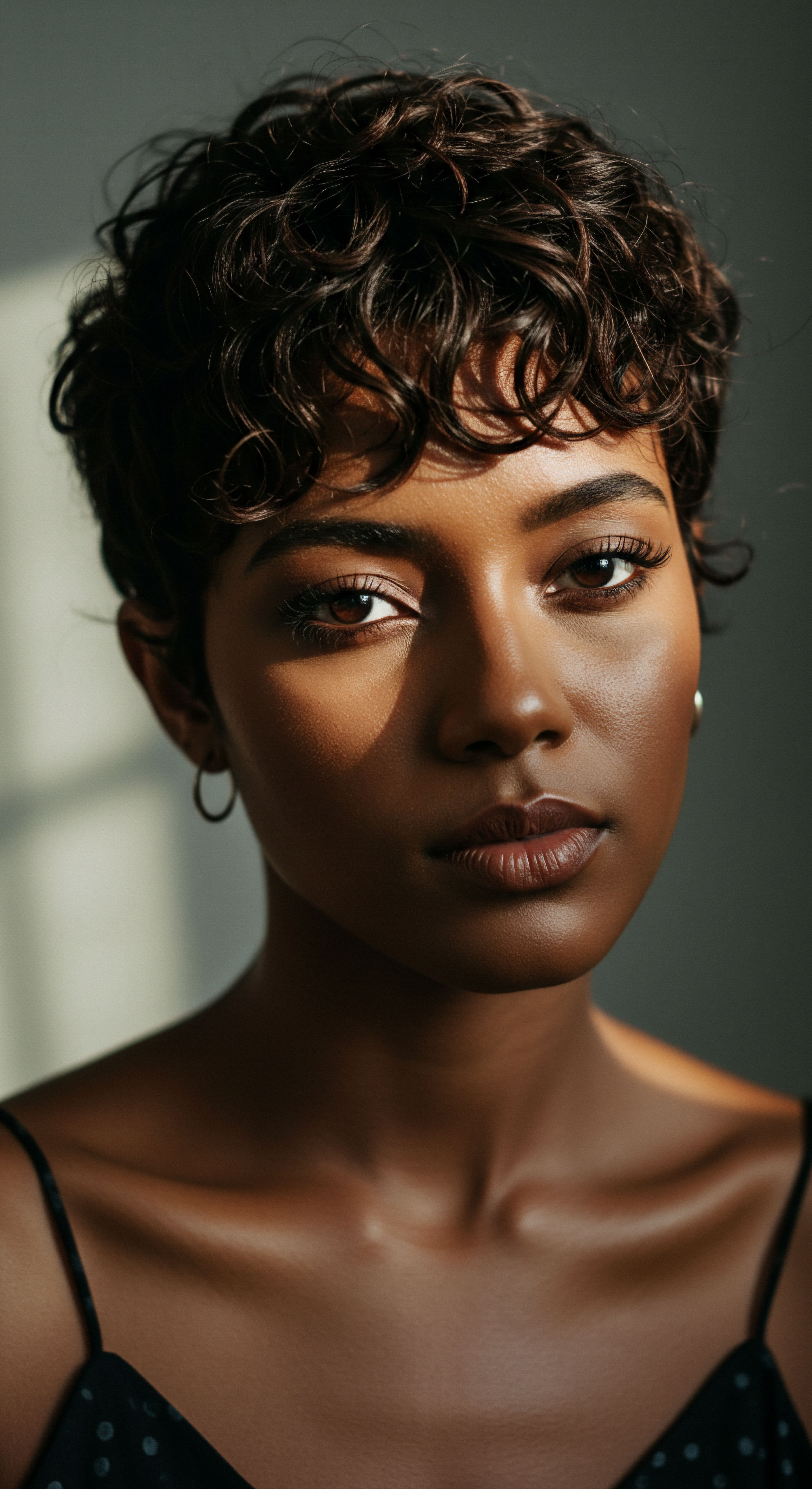
Roots
A quiet question often arises in the stillness of a wash day ❉ could the very water caressing our coils and curls be a silent contributor to their woes? We pour over ingredients in conditioners and creams, yet the foundational element of our hair care—water itself—often remains an afterthought. For those with textured hair, this elemental truth carries a particular weight, for the unique architecture of these strands can interact with the mineral content of water in ways that whisper of dryness, dullness, and a stubborn refusal to cooperate. It is here, at the confluence of hair science and the everyday experience of water, that we begin our exploration.
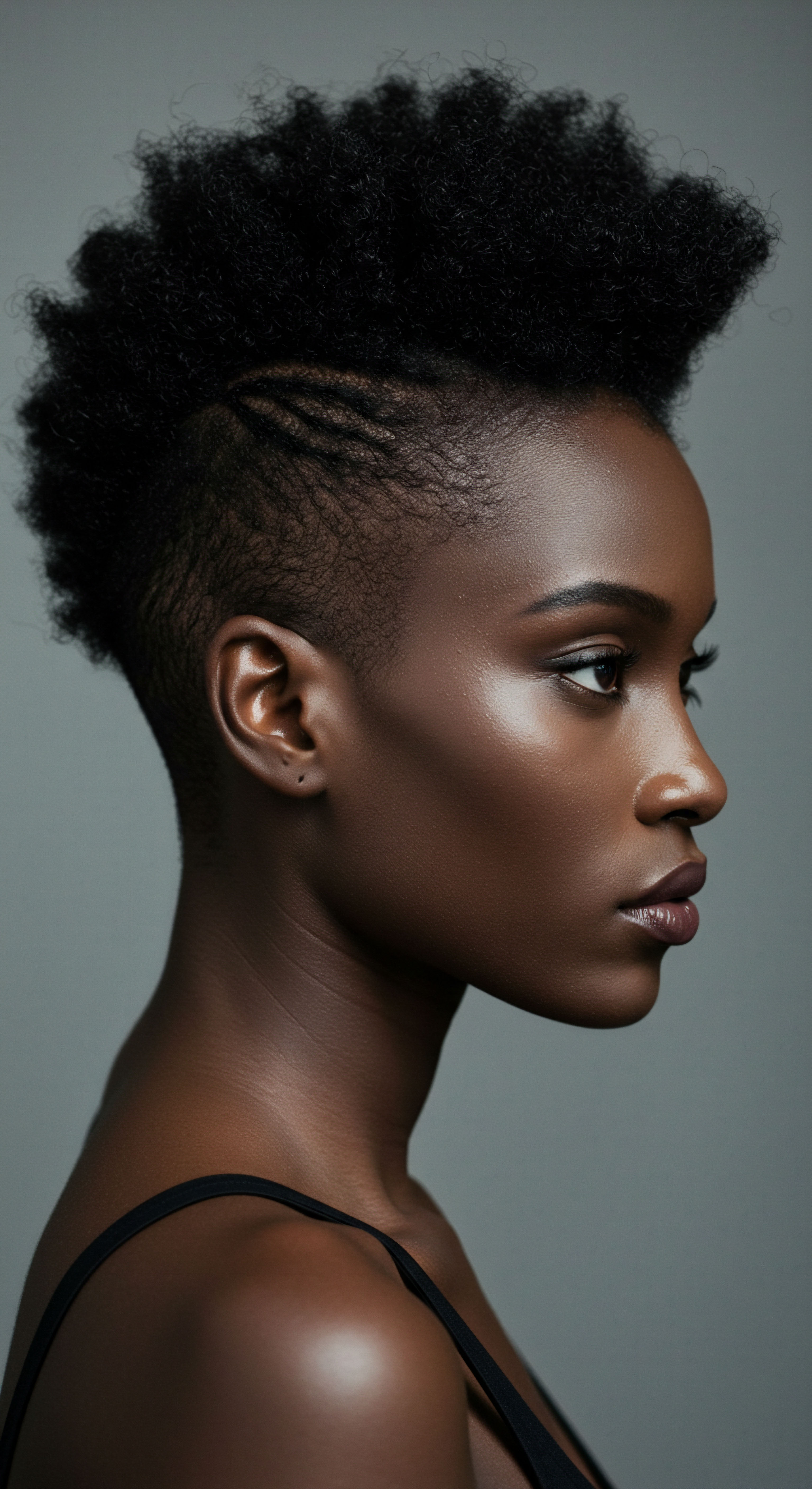
The Hair’s Intimate Structure and Water’s Touch
Textured hair, with its diverse curl patterns and often elliptical cross-section, presents a surface rich in possibilities for interaction. The outermost layer, the Cuticle, composed of overlapping scale-like cells, acts as a protective shield. When these cuticles lie flat, hair reflects light with a healthy sheen and feels smooth.
However, the presence of certain dissolved minerals in water can disrupt this serene alignment. Water, as it travels through the earth, gathers various minerals, primarily calcium and magnesium, defining its ‘hardness.’ These minerals, bearing a positive electrical charge, are drawn to the naturally negatively charged areas of the hair fiber, particularly along the cuticle edges and damaged regions.
The hair’s primary component, Keratin Protein, readily attracts these positively charged mineral ions. Once attached, they can form a tenacious film, an invisible veil that prevents moisture from truly penetrating the hair shaft. This mineral coating obstructs the hair’s natural hydration process, leaving strands feeling dry, rough, and less supple. The very structure of textured hair, with its inherent bends and twists, offers more surface area and potential points for these minerals to adhere, making it particularly susceptible to their accumulation.
The subtle interplay between water’s mineral content and the unique structure of textured hair often determines its daily feel and appearance.
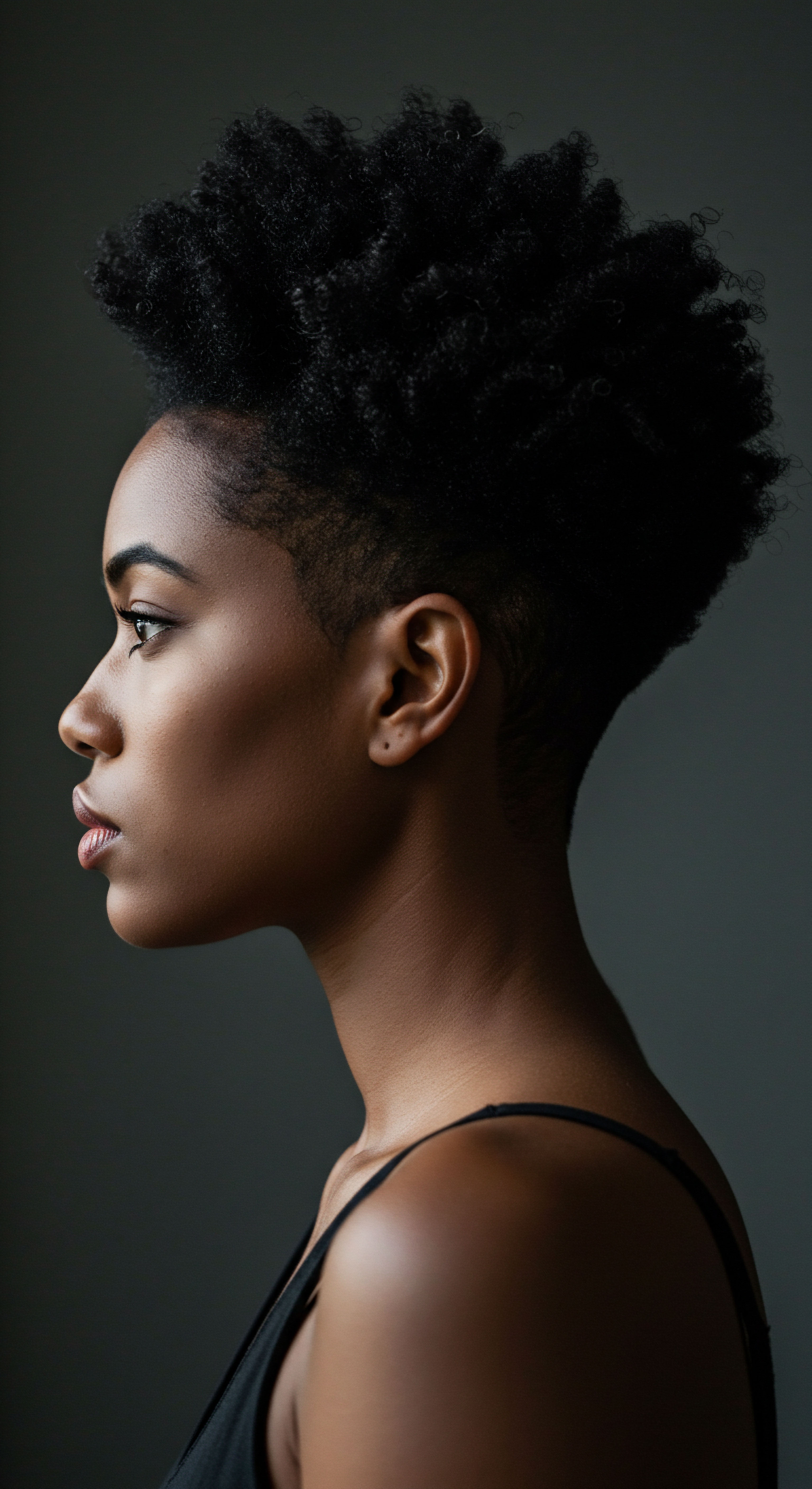
Understanding Water’s Mineral Inhabitants
Water, though seemingly simple, carries a complex cargo of dissolved solids. The distinction between ‘hard’ and ‘soft’ water lies in the concentration of these dissolved minerals.
- Hard Water ❉ Characterized by high concentrations of calcium and magnesium ions. These are picked up as water flows through geological formations rich in limestone, chalk, or gypsum.
In many regions, water hardness is measured in parts per million (ppm) of calcium carbonate. Water with values exceeding 120 ppm is generally considered hard, and in some areas, it can reach significantly higher levels, influencing daily hair experiences.
- Soft Water ❉ Contains lower concentrations of these minerals, making it gentler on hair and skin.
The absence of excessive mineral ions allows shampoos to lather more effectively and permits hair to retain its natural oils, promoting a softer, smoother feel.
Beyond calcium and magnesium, other metals can also find their way into our water supply and onto our hair. Iron, often present in well water, can lead to a reddish-orange tint, especially on lighter hair, and can make dark hair appear darker with red highlights. Copper, leaching from pipes or added to water as an algaecide, can impart a green hue to lighter strands. These metallic deposits not only alter hair color but can also interfere with chemical treatments like coloring and perming, leading to unpredictable results.
| Mineral Type Calcium |
| Typical Source Limestone, treated municipal water |
| Observed Hair Effect Dryness, weight, flaking scalp, perm relaxation |
| Mineral Type Magnesium |
| Typical Source Limestone, geological formations |
| Observed Hair Effect Dryness, weight, dullness |
| Mineral Type Iron |
| Typical Source Well water, old pipes |
| Observed Hair Effect Reddish-orange tint, darkening, interferes with chemical processing |
| Mineral Type Copper |
| Typical Source Pipes, algaecides in pools |
| Observed Hair Effect Green tint, darkening, interferes with chemical treatments |
| Mineral Type Understanding these elemental interactions illuminates the path to healthier hair. |

How Hair Porosity Guides Mineral Absorption?
The concept of Hair Porosity plays a pivotal role in how mineral buildup affects textured hair. Porosity refers to the hair’s ability to absorb and retain moisture.
- Low Porosity Hair ❉ Has tightly bound cuticles that resist moisture penetration. While this might seem protective, it also means that once minerals settle on the surface, they are less likely to be rinsed away easily, creating a persistent film. This can exacerbate the already challenging task of hydrating low porosity strands.
- High Porosity Hair ❉ Features raised or damaged cuticles, allowing moisture to enter and leave readily. This openness, however, also means that minerals can penetrate deeper into the hair shaft, bonding more strongly to internal structures. Such hair is more susceptible to rapid mineral absorption and subsequent damage, leading to increased dryness, brittleness, and breakage.
A study published in the International Journal of Cosmetic Science in 2011 demonstrated that the amount of minerals adhering to hair significantly depends on the hair’s condition; damaged hair attracts more minerals than less damaged hair. This finding suggests a compounding effect ❉ hard water contributes to damage, and damaged hair then becomes an even more receptive host for further mineral deposition. This cycle underscores the deep, often unseen, impact of water quality on textured hair health.

Ritual
Our daily hair care practices are not merely routines; they are rituals, moments of intention and care. Yet, what if the very foundation of these rituals—the water we use—is quietly undermining our efforts? Stepping into the shower, we anticipate the cleansing flow, but for many with textured hair, this moment can also signify the start of a battle against unseen mineral deposits.
The question then becomes, how can we thoughtfully adapt our rituals to align with the true needs of our hair, especially when confronting the challenge of water quality? This section explores the practical wisdom of water filtration and its place within a mindful hair care regimen.

Do Shower Filters Truly Soften Water for Hair Health?
The promise of a shower filter often sounds like a simple solution to a complex problem. These devices are designed to remove impurities from water before it touches our skin and hair. Many shower filters excel at removing chlorine, a common disinfectant in municipal water supplies that can strip hair of its natural oils, leading to dryness and breakage. Chlorine’s reactive nature makes it relatively straightforward for filter media like KDF (Kinetic Degradation Fluxion) and calcium sulfite to neutralize it.
However, when it comes to the primary culprits of hard water—calcium and magnesium—the efficacy of typical shower filters becomes less certain. Most shower filters are not designed to significantly reduce the mineral content responsible for water hardness. The amount of filter media contained within a compact shower filter is often insufficient to truly soften water through ion exchange, which is the process required to remove these dissolved minerals. While some manufacturers might suggest their filters mitigate the effects of hard water, scientific evidence supporting their ability to substantially lower calcium and magnesium levels is limited.
While shower filters effectively reduce chlorine, their ability to truly soften water by removing hard minerals remains a subject of ongoing discussion and limited scientific validation.

Mechanisms of Water Filtration and Their Limits
Understanding how various filter technologies work helps illuminate their capabilities and limitations.
- Activated Carbon ❉ This material is highly effective at adsorbing chlorine, volatile organic compounds (VOCs), and odors. However, its efficiency diminishes with hot water, as high temperatures can damage the carbon media and potentially release trapped contaminants back into the water.
- KDF (Kinetic Degradation Fluxion) ❉ KDF media uses a redox (reduction-oxidation) process to remove chlorine and some heavy metals. It can also help inhibit the growth of bacteria and control scale-causing microorganisms, indirectly mitigating some hard water effects.
- Calcium Sulfite ❉ Another effective agent for chlorine and chloramine removal, calcium sulfite works by reacting with these chemicals.
- Ion Exchange Resins ❉ This is the technology found in true water softeners. Ion exchange resins swap hardness ions (calcium and magnesium) for softer ions (like sodium). This process requires a significant amount of resin and regeneration, making it impractical for most compact shower filters. Whole-house water softeners employ this method for comprehensive water treatment.
A key consideration is the contact time between the water and the filter media. Small shower filters have very short contact times, which limits their capacity to remove high concentrations of minerals, especially those responsible for hardness. For individuals facing extremely hard water, relying solely on a shower filter for mineral removal might not provide the desired results.
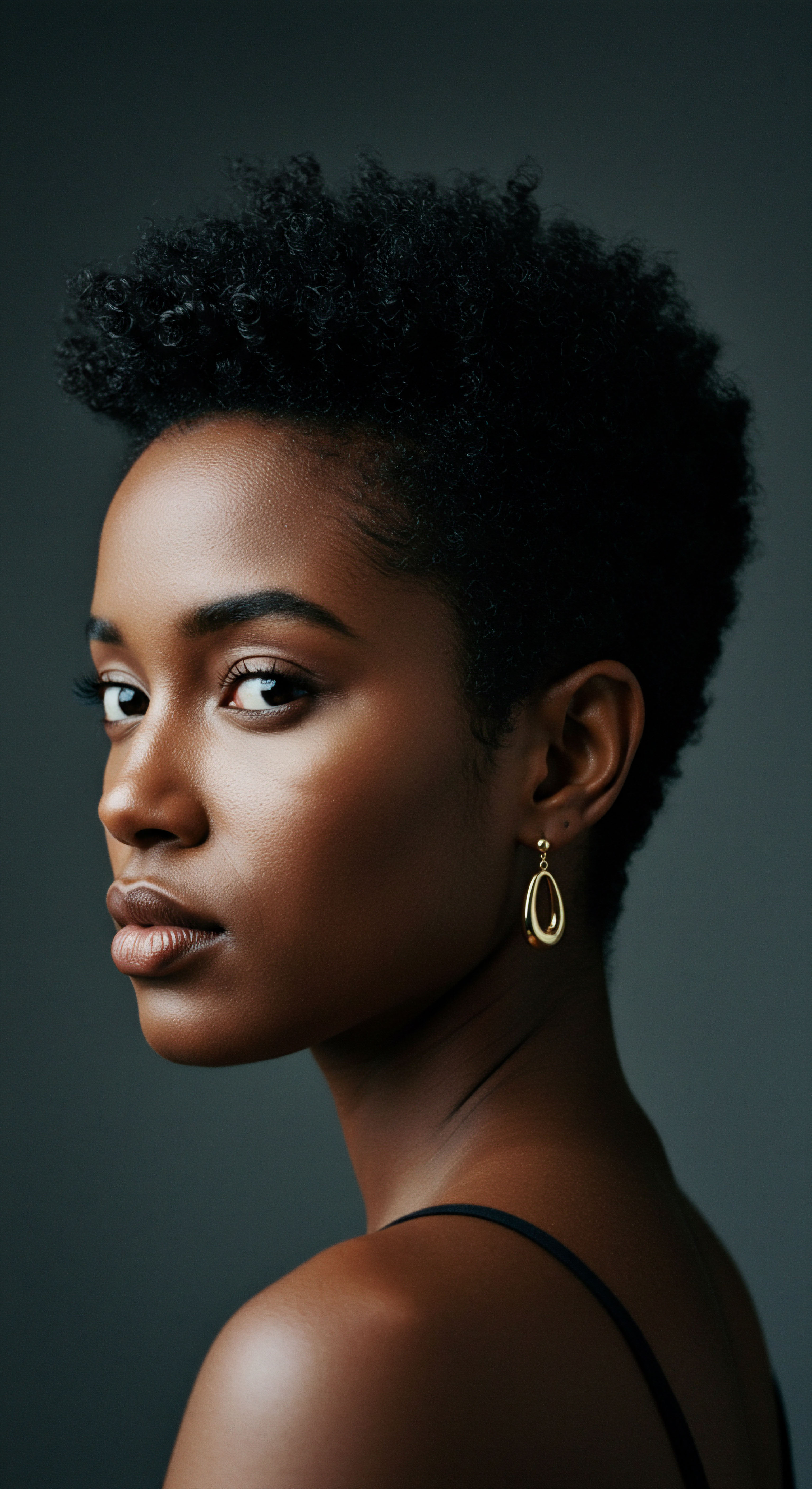
Beyond the Filter Head ❉ A Holistic Approach to Water Quality
While a shower filter can certainly be a valuable addition to a hair care regimen, particularly for chlorine reduction, it forms only one piece of a larger puzzle when confronting mineral buildup. A comprehensive approach involves:
- Clarifying Shampoos ❉ These are specifically formulated with chelating agents that bind to mineral ions, allowing them to be rinsed away. Regular use can help remove existing buildup.
- Acidic Rinses ❉ Diluted apple cider vinegar (ACV) rinses can help dissolve some mineral deposits and smooth the hair cuticle, restoring shine. The acidity helps to counteract the alkaline nature of mineral deposits.
- Professional Treatments ❉ Salons offer specialized treatments designed to remove stubborn mineral and metal buildup, often using stronger chelating formulas.
- Considering Whole-House Softeners ❉ For those seeking a more complete solution to hard water across their entire home, a whole-house water softener is the most effective method for removing calcium and magnesium. This option, while a larger investment, ensures that all water used for bathing, washing, and cooking is softened.
Ultimately, the efficacy of water filters in preventing mineral buildup on textured hair depends heavily on the specific filter type and the water’s hardness level. While they offer benefits, particularly for chlorine removal, a multifaceted approach combining filtration with targeted hair care products and practices provides the most robust defense against mineral accumulation.

Relay
To truly comprehend the interaction between water and textured hair, we must transcend surface-level understanding, delving into the deeper currents of science, history, and cultural resonance. The seemingly simple act of washing hair carries layers of meaning, from ancient practices shaped by available water sources to modern scientific inquiries into molecular interactions. Can water filters truly stand as guardians against mineral buildup, or do they merely offer a partial respite in a more intricate story? This exploration seeks to connect these diverse perspectives, grounding our insights in research and a broader appreciation for the hair’s resilience.

The Molecular Embrace ❉ Minerals and Hair Keratin
At a molecular level, the interaction between hard water minerals and hair keratin is a dance of charges. Hair protein, particularly the amino acids within its structure, carries weak negative electrical charges. Calcium, magnesium, iron, and copper ions, prevalent in hard water, possess positive charges, creating an electrostatic attraction. This attraction causes these minerals to bind strongly to the hair fiber, particularly at anionic sites.
Once these multivalent cations are adsorbed, they become difficult to remove. The extent of this binding is influenced by several factors, including the hair’s condition, its porosity, the length of the fiber, and the concentration and duration of exposure to the minerals. Damaged hair, with its lifted cuticles and increased negatively charged sites, becomes a more receptive canvas for mineral deposition. This means that textured hair, which can be prone to dryness and cuticle lifting, might disproportionately accumulate these deposits.
The presence of these minerals impacts the hair in various ways:
- Structural Rigidity ❉ Mineral deposits can make hair feel stiffer and less flexible, potentially reducing its natural elasticity. This diminished flexibility can contribute to increased friction between strands, leading to cuticle damage and tangles.
- Hydration Barrier ❉ The mineral film acts as a physical barrier, impeding the proper absorption of moisture and beneficial ingredients from conditioners and styling products. This explains why even rigorous conditioning might leave hard water-exposed hair feeling parched.
- Chemical Interference ❉ Metals like copper and iron can interfere with chemical treatments such as hair coloring and permanent waving, leading to uneven color deposit or unpredictable results. Oxidized iron, for example, can act as an oxidizer on hair, similar to mild peroxide, potentially altering its texture.
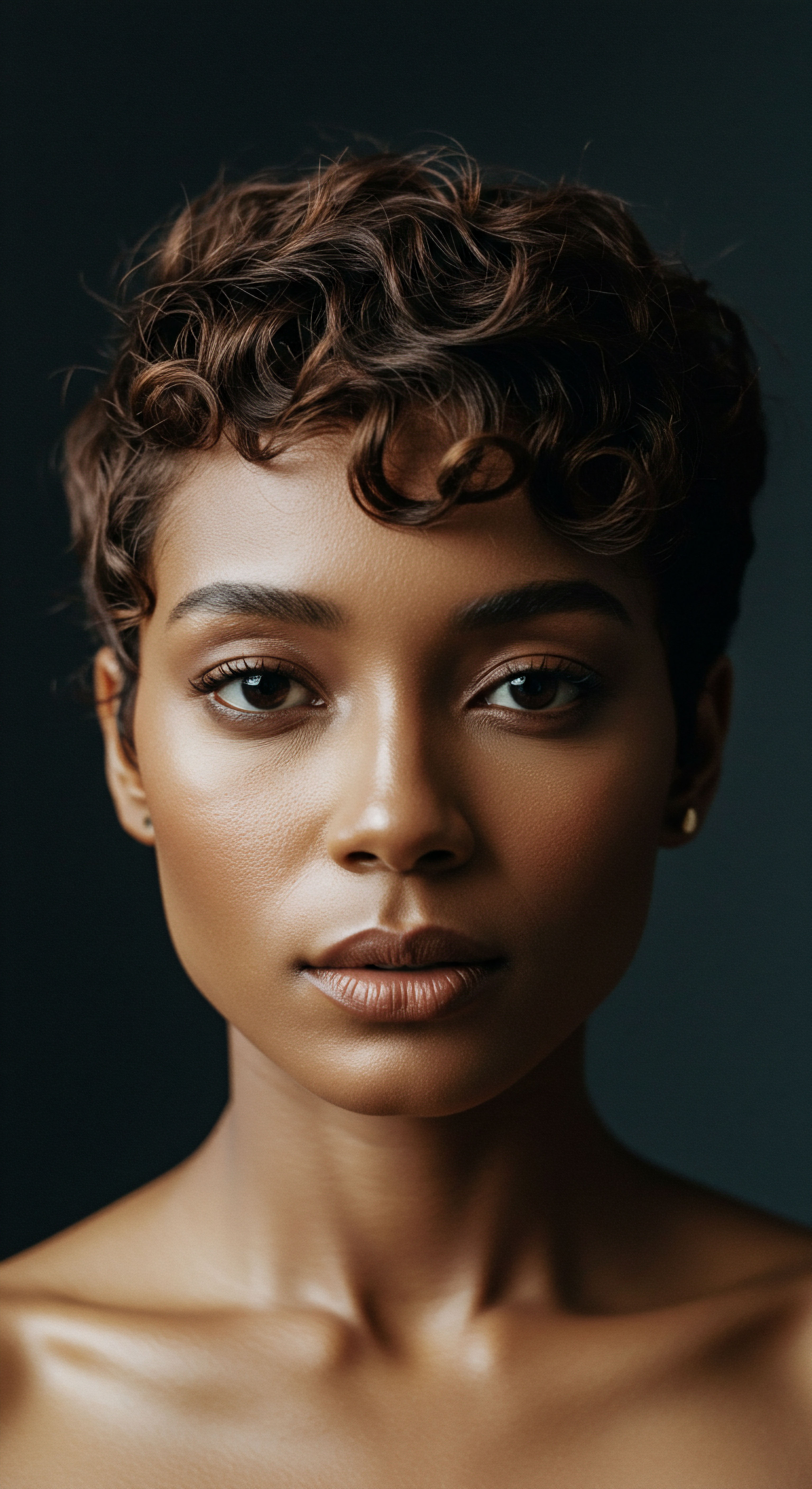
What Do Studies Say About Hard Water’s Hair Impact?
Scientific investigations consistently highlight the adverse effects of hard water on hair. A 2011 study published in the International Journal of Cosmetic Science, conducted by Evans, Marsh, and Wickett, found that hard water exposure led to a ruffled appearance of the hair surface, accompanied by higher mineral deposition and decreased thickness when compared to distilled water-treated hair. This visual and structural alteration directly correlates with the perceived dullness and roughness experienced by individuals washing with hard water.
More specifically, research has quantified the impact on hair strength. A 2018 study published in the International Journal of Trichology observed that hair washed in hard water demonstrated significantly less strength than hair washed in distilled water. This reduction in tensile strength translates to increased susceptibility to breakage, a particular concern for textured hair which already faces challenges with maintaining length and minimizing shedding. Furthermore, a 2019 study published in the Journal of Cosmetic Dermatology reported that individuals using hard water accumulated 25-30% more mineral buildup on their hair compared to those with soft water, leading to increased dryness and breakage.
Consider the case of London, a city known for its hard water. Residents frequently report issues with hair dryness, dullness, and increased breakage. While individual experiences vary, the consistent reports align with the scientific understanding of mineral accumulation.
The mineral content, primarily calcium and magnesium, creates a waxy film that resists cleansing and hydration, contributing to the “limp, brittle, and hard to style” hair often described. This real-world observation reinforces the scientific data on hard water’s detrimental effects on hair fiber integrity.
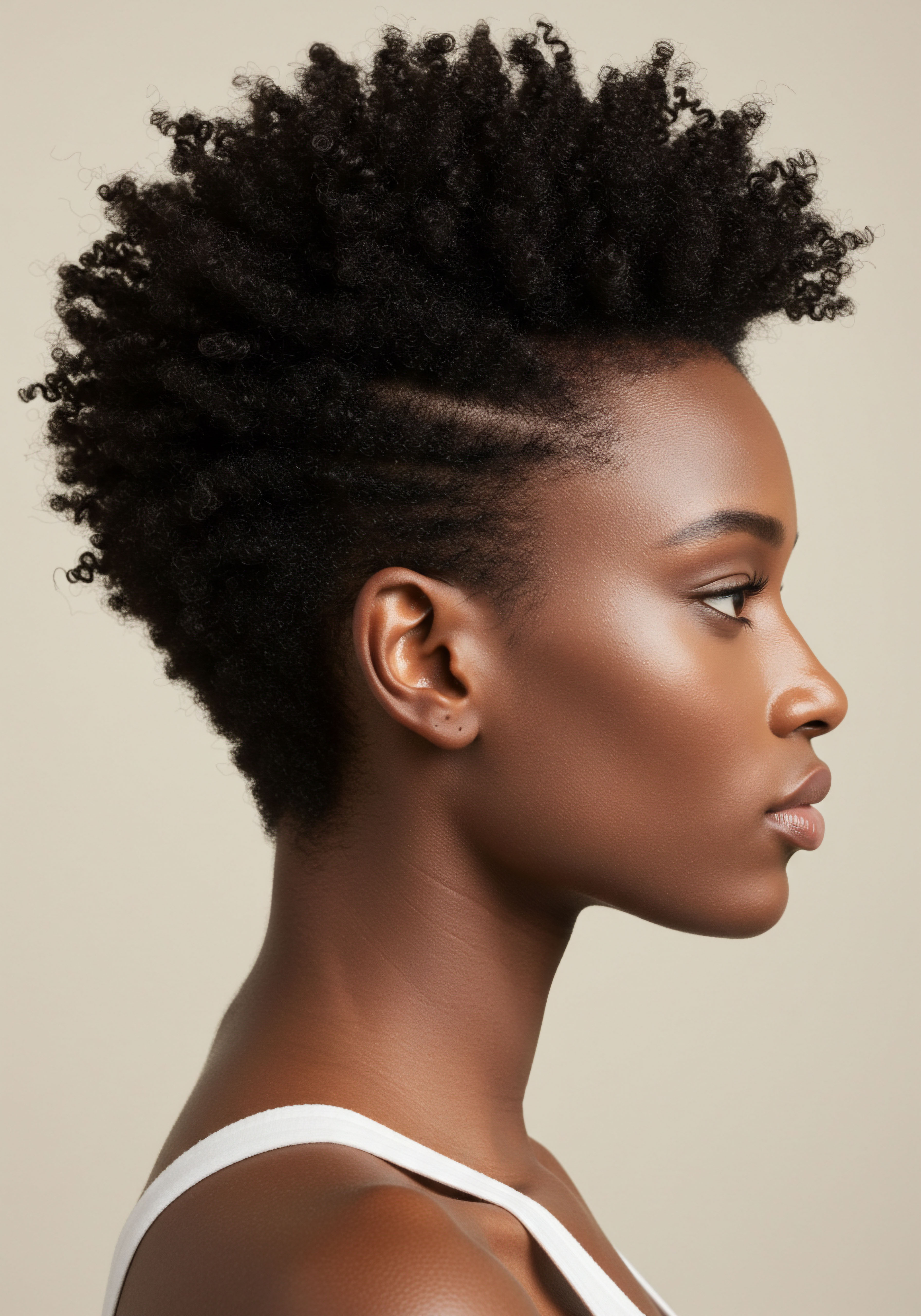
The Historical and Cultural Lens on Water and Hair
The relationship between humans, water, and hair care extends far beyond modern plumbing. Across civilizations, the quality and availability of water shaped hair practices. In ancient times, when water sources were often unreliable and potentially contaminated, frequent full-body washing was less common. Instead, people relied on alternative methods for hair care, such as herbal rinses, oils, and meticulous brushing to maintain cleanliness and appearance.
For instance, in ancient India, Ayurvedic traditions incorporated herbs like amla and shikakai, often combined with water, to cleanse and nourish hair. In some Asian cultures, rice water rinses have been used for centuries, attributed to promoting long, strong, and lustrous hair. These practices were born from a deep understanding of local resources and their interaction with the body. The very act of washing hair can carry spiritual significance, as seen in Vaishnavism, where washing hair in certain sacred waters like the Ganges is considered disrespectful, highlighting the reverence for water itself.
Today, while our understanding of water quality is informed by science, these historical echoes remind us that the quest for healthy hair is deeply intertwined with our relationship to water. The desire to filter water, therefore, can be seen as a modern continuation of an ancient human impulse to adapt available resources for optimal well-being, particularly when it comes to something as culturally and personally significant as hair.

Reflection
The journey through the intricate world of water and textured hair reveals a delicate balance, a constant conversation between our strands and their environment. While water filters present a compelling modern solution, their role in preventing mineral buildup is more nuanced than a simple promise. They serve as diligent allies in the fight against chlorine, a known aggressor to hair’s vitality, yet they offer a more modest contribution to the grander challenge of hard water minerals.
Our exploration underscores the importance of a holistic perspective, one that honors scientific understanding alongside the wisdom of historical practices and the unique needs of textured hair. The pursuit of healthy, radiant strands ultimately beckons us toward an intimate understanding of our hair’s response to its surroundings, allowing us to cultivate practices that truly celebrate its inherent beauty.
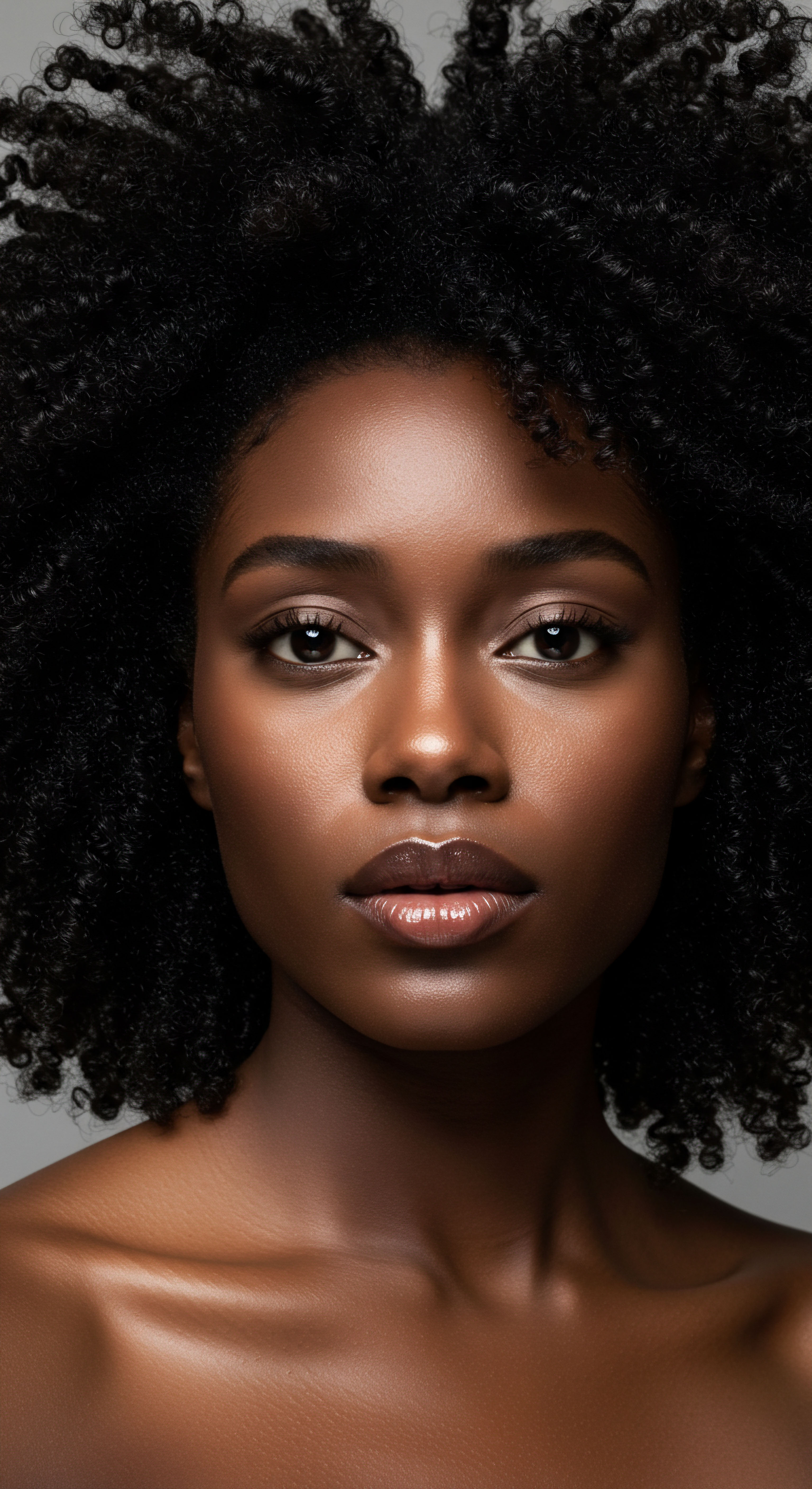
References
- Evans, A. O. Marsh, J. M. & Wickett, R. R. (2011). The structural implications of water hardness metal uptake by human hair. International Journal of Cosmetic Science, 33(5), 421-427.
- Luqman, M. W. Ramzan, M. H. Javaid, U. Ali, R. Shoaib, M. & Luqman, M. A. (2018). To Evaluate and Compare Changes in Baseline. Journal of the Pakistan Medical Association, 68(9), 1132-1136.
- Sakamoto, K. Lochhead, R. Y. Maibach, H. I. & Yamashita, Y. (Eds.). (2017). Cosmetic Science and Technology ❉ Theoretical Principles and Applications. Elsevier.
- Dreher, F. Jungman, E. Sakamoto, K. & Maibach, H. I. (Eds.). (2022). Handbook of Cosmetic Science and Technology (5th ed.). Routledge.
- Srinivasan, G. Balaji, N. & Vairamani, M. (2013). Effects of hard water on hair. International Journal of Trichology, 5(3), 137-139.
- Luqman, M. W. Ali, R. Khan, Z. & Javaid, U. (2016). Effect of topical application of hard water in weakening of hair in men. Journal of the Pakistan Medical Association, 66(9), 1132-1136.
- Angelos, P. (2020). The Science of Hair. Healthline.
- Yao, X. & Zhang, J. (2019). The effect of hard water on hair properties. Journal of Cosmetic Dermatology, 18(4), 1082-1087.
- Kim, J. et al. (2019). Chlorine removal by calcium sulfite in water treatment. Journal of Water Process Engineering, 28, 315-325.
- Rodríguez-Reinoso, F. et al. (2018). Efficiency of coconut shell-based activated carbon for chlorine and VOC removal. Water Research, 147, 30-38.
- Santos, J.M. et al. (2017). Removal of particulate matter using stainless steel mesh filters in water purification. Journal of Water Supply ❉ Research and Technology—AQUA, 66(5), 284-292.
- Kwon, O. S. et al. (2018). Evaluation of heavy metal removal efficiency by different water treatment systems using KDF media. Environmental Science and Pollution Research, 25(30), 3038-3058.